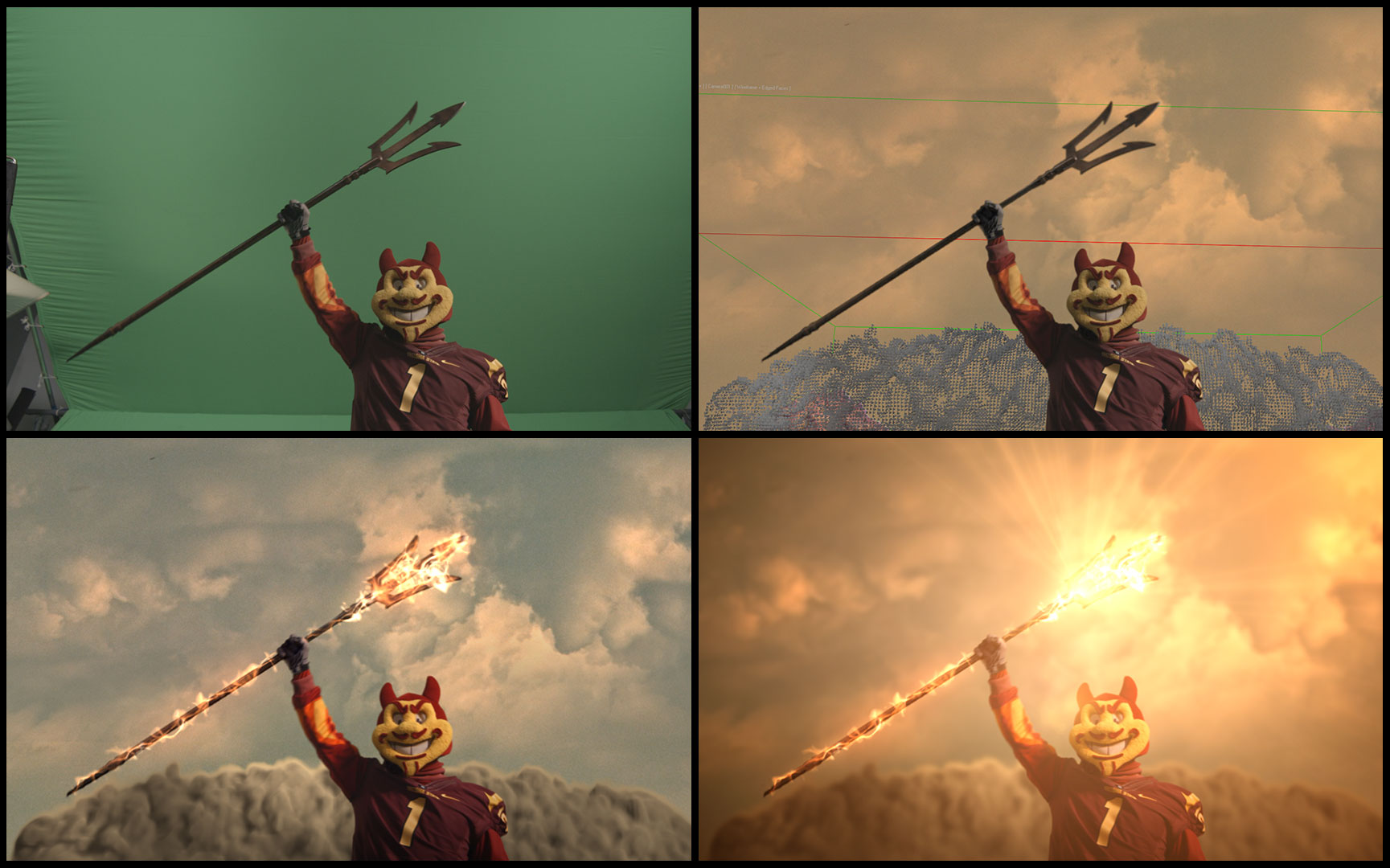How Green Screen Works
Wednesday, November 11th, 2015
Green Screen Production
I’ve recently started teaching film and video to school kids and soon I will be giving a workshop on how green screen production works. Not only do I want to show them what you can do with green screen but also how the technology works which gave me the idea for this blog.
Green Screen Production (or chroma keying) is a technique for compositing two images or frames together in which a colour, or a small colour range, from one image is removed, or made transparent, revealing another image behind it. This technique is also referred to as colour keying, colour-separation overlay (CSO), green screen, and blue screen.
The Camera Chip
So how is this done, and why green screen? First of all we need to look at how the image sensors in the cameras read light. One of the most common camera image sensors is CCD.
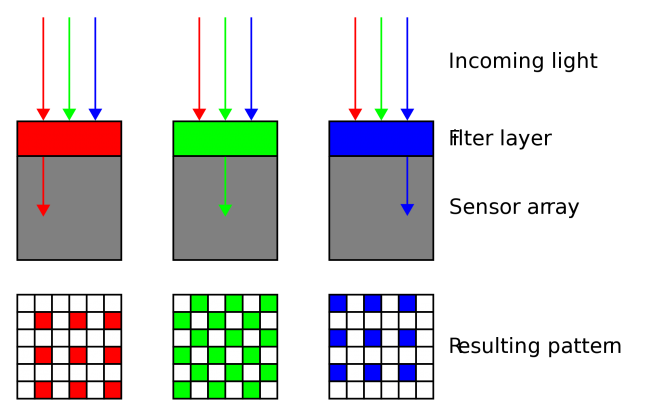
CCD
A CCD device is an analogue shift register that delays analogue sampled signals. The light sensor in a CCD is an isolated cable of semiconductors surrounded by ring electrodes. The capacitors accumulate an electric charge proportional to the light levels hitting them. Once the array has been exposed to light the charge is transported across the chip and read at one corner of the array where it is converted into a voltage. An analogue to digital converter turns each pixel value into a digital value controlled by a clock signal. This is basically the frame rate and would be done 25 times per second for PAL video. A special manufacturing process is used to create the ability to transport the charge across chip without distortion. This process allows for the production of very high quality sensors in terms of fidelity and light sensitivity.
Single CCD cameras use Bayer filters on the CCD causing each pixel to detect only a third of the colour information. The missing information has to be interpolated in order to fill in the gaps which causes single CCD cameras to have less saturation. Bayer filtering takes colour values from the surrounding pixels and maps them across the others allowing for a colour image to be generated. The filter pattern is 50% green, 25% red and 25% blue. There twice as many green elements as red or blue in order to mimic the physiology of the human eye. The luminance perception of the human retina uses M and L cone cells combined, during daylight vision, which are most sensitive to green light. The theory is that to the human brain, the colour green means vegetation and food, so our eyes have been tuned to be more susceptible to it’s colour. The bayer filters used in cameras is one of the primary reasons why green was used in chroma keying digital video as the filters take in more colour information more than any other colour. Therefore, the green camera channel contains the least “noise” and can produce the cleanest key/matte/mask. Additionally, less light is needed to illuminate green, again because of the higher sensitivity to green in image sensors.
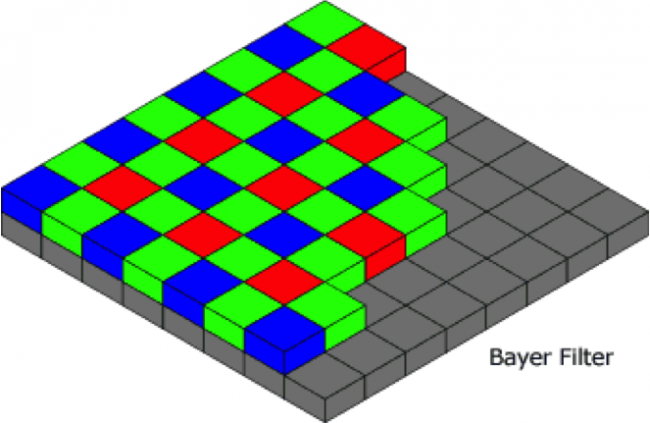
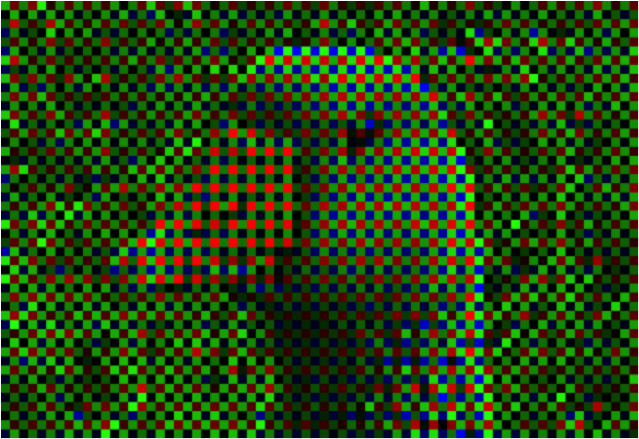
You can see in these examples of Bayer Filtering how green is the most dominant colour.
Celluloid
You can also chroma key on celluloid footage. Film stock was first created with the introduction of a transparent flexible film based material called Celluloid. Celluloid plastic was one of the first thermoplastics to be created. The material melts down to a liquid when heated and freezes to a brittle and glassy state when cooled sufficiently. Just like digital video shooting formats, film stock has many formats and gauges.
One of these is orthochromatic film and refers to an emulsion that is so sensitive to only blue and green light and thus it can be processed with a red safelight. However, blue objects appear lighter and red objects are darker because of increased blue sensitivity due to the blue emulsion layer of film having the finest crystals and thus good detail and minimal grain. Due to the increased sensitivity to the colour blue, blue screens are generally used for sfx shots when shooting on film as apposed to green. However a blue background may match a subject’s eye colour or common items of clothing, such as jeans, or a dark-navy suit. Blue was used before digital keying became commonplace because it was necessary for the optical process, but it needed more illumination than green. However, it is also further in the visual spectrum from red, the predominant colour in human skin.

The Green Screen Production Process
The very basic stages of green screen production are; the principal subject is filmed or photographed against a background consisting of a single colour or a relatively narrow range of colours, usually blue or green because these colours are considered to be the furthest away from skin tone. The portions of the video which match the preselected color are replaced by the alternate background video. This process is commonly known as “keying”, “keying out” or simply a “key”.

It is commonly used for weather forecast broadcasts, wherein the presenter appears to be standing in front of a large map, but in the studio it is actually a large blue or green background. The meteorologist stands in front of a bluescreen, and then different weather maps are added on those parts in the image where the color is blue. If the meteorologist wears blue clothes, their clothes will become replaced with the background video. This also works for green screens, since blue and green are considered the colours least like skin tone. The choice of colour is up to the effects artists and the needs of the specific shot. In the past decade, the use of green has become dominant in film special effects. Also, the green screen background is favoured over blue for outdoors filming where the blue sky might appear in the frame and could accidentally be replaced in the process. Although green and blue are the most common, any color can be used. Red is usually avoided due to its prevalence in normal human skin pigments, but can be often used for objects and scenes which do not involve people.
The most important factor for a key is the color separation of the foreground (the subject) and background (the screen) a bluescreen will be used if the subject is predominately green (for example plants), despite the camera being more sensitive to green light.
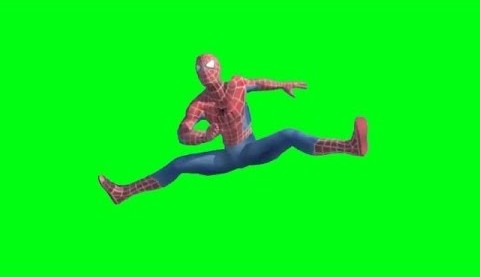

In the film Spider-Man (2002), scenes where both Spider-Man and the Green Goblin are in the air, Spider-Man had to be shot in front of the green screen and the Green Goblin had to be shot in front of a bluescreen, because Spider-Man wears a costume which is red and blue in colour and the goblin wears a costume which is entirely green in colour. If both were shot in front of same screen, one character would have been partially erased from the shot.
Conclusion
I hope you found that useful and that I have at least scratched the surface of green screen production. If you have any questions then please feel free to get in touch with me.
Camera Operator | Lighting Cameraman | Web Commercials | Green Screen Production | Talking Heads | Corporate Video
IMDB | Instagram | Vimeo | LinkedIn | Facebook | Twitter
Back To Blogs
